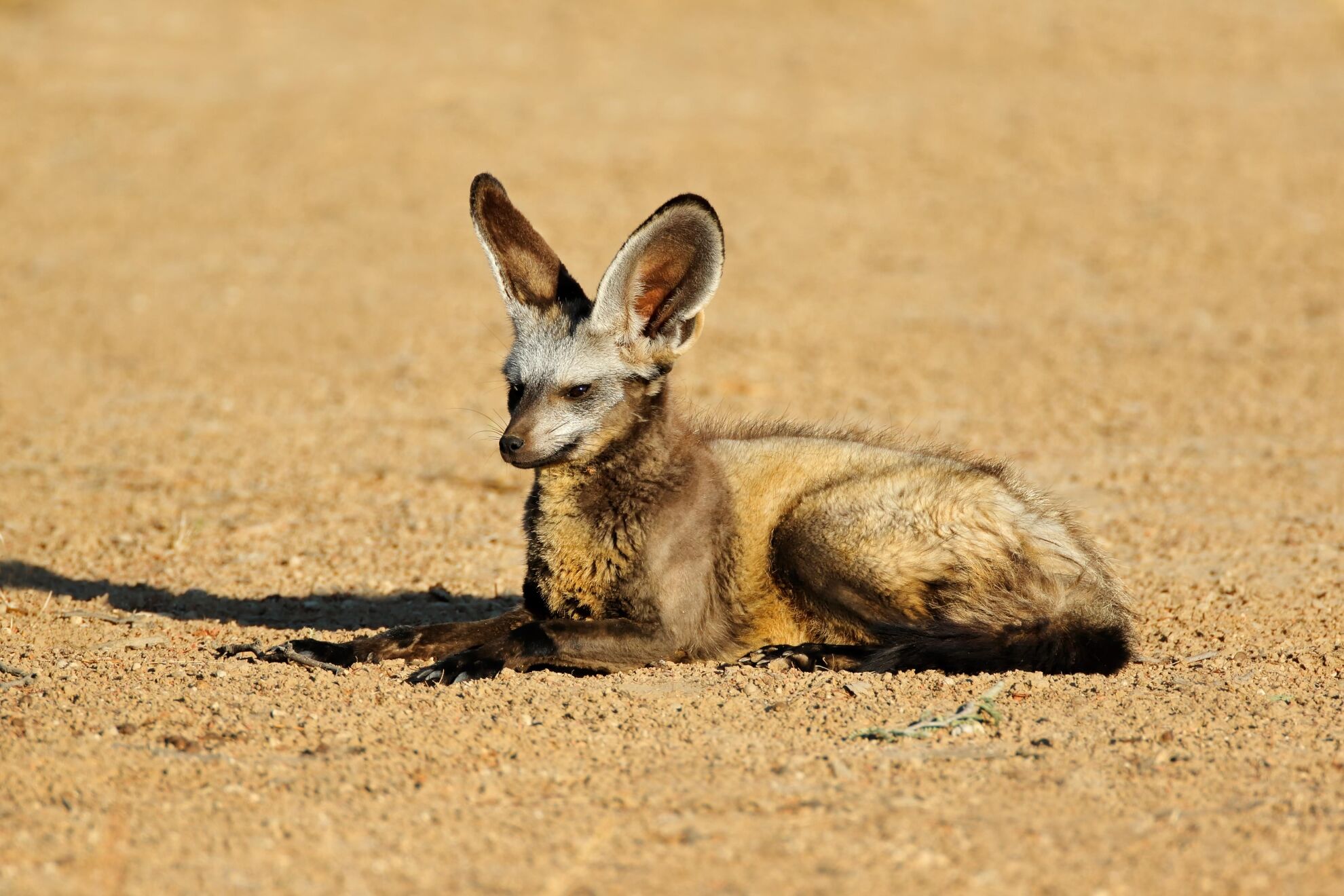

The Bat-Eared Fox (Otocyon megalotis) is a small fox species native to the African savanna and semi-arid regions of Southern and East Africa. There are two species of Bat-Eared Foxes, one in southern Africa and one in East Africa.
They live in areas of short grasslands, savannas, and acacia woodlands, where they hunt in the short grasses. When preyed upon, they hide in shrubs and tall grass until the danger has passed.
These carnivores aren’t water dependent, but rather gain moisture from the food they consume. These Foxes hunt in groups and locate prey through sound, picked up by their large ears. A large portion of their diet consists of termites and dung beetles, but young birds, eggs, rodents, and lizards also make up their culinary variety.
The Bat-Eared Fox is extremely social and lives in pairs, groups, or family units within dens. Although they are quite capable of digging their own burrows, they often live in other animals’ burrows, such as the aardvark. The aardvark’s burrow has several chambers as well as entrances, making it the perfect place to raise pups. Mating takes place from September to November, and after a gestation period of 60-70 days, the vixen gives birth to between 2 and 5 pups. Both parents assist in rearing their offspring.
Being so tiny, the Bat-eared Fox has numerous enemies, including large Birds of Prey, Pythons, Wild Dogs, Cheetahs, Hyenas, Lions, and Leopards. Large snakes are also responsible for the death of many young Bat-eared Fox pups.
Their IUCN status is Least Concern.
Name:
Otocyon megalotis
Male Weight:
4,4 – 9,9 pounds
Male Shoulder height:
12-16 inches
Range:
Southern and Eastern Africa
Mating:
September to November
Gestation Period:
60-70 days
Life span:
6-13 years
The Bat-Eared Fox is Small but still a Proud Hunting Trophy
The Bat-eared Fox is a small carnivore, weighing less than 10 pounds. It has a tan coat while its underbelly and throat are lighter. Their muzzles and the tip of the tail are black, while the inside of the ears is white. Their ears are larger than normal. The Bat-eared Fox uses these enormous ears to listen for prey as it hunts.
They are renowned for their exceptional hearing and are extremely agile. When in danger, they can reach speeds of up to 32 miles per hour to escape, hiding and camouflaging in the long grasses.
Depending on where the African hunting safari is set to take place, there are numerous hunting methods available, including spot-and-stalk, night hunting with a spotlight, as well as using predator calls to attract the Bat-Eared Fox.
One of the challenges of fox hunting in Africa is that they are nocturnal, and extremely difficult to spot during daylight hours – A night hunting safari is recommended, should it be allowed in your chosen game hunting destination. These agile foxes also prefer dense cover, which makes stalking them undetected quite difficult, and stealth, as well as immense patience and skill, are required.
When hunting Bat-eared Foxes, choose a small-caliber rifle to prevent damaging the trophy and hide. A .22 to .223 will ensure a humane kill, should accurate shot placement be enforced.
Search from our range of Hunts across various popular destinations in Africa.
Find A Hunt